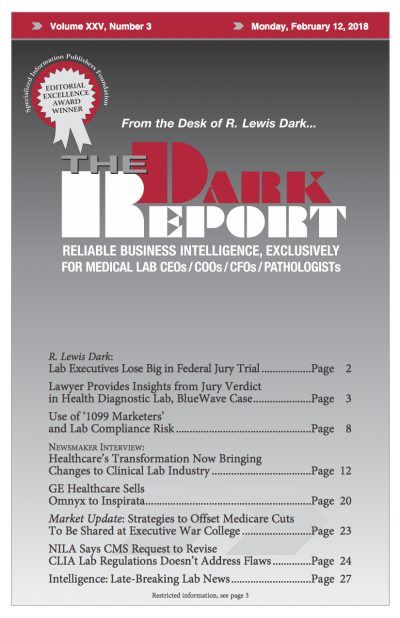“Today, patients want to get diagnosis and treatment faster with fewer visits to the doctor’s office. They want speedier and more comprehensive delivery of clinical services, be it laboratory tests, imaging, or other procedures.” —Ralph Taylor, President, Sysmex America, Inc. CEO Summary: To bring testing closer to patients, clinical laboratories will need to offer sophisticated […]
To access this post, you must purchase The Dark Report.


